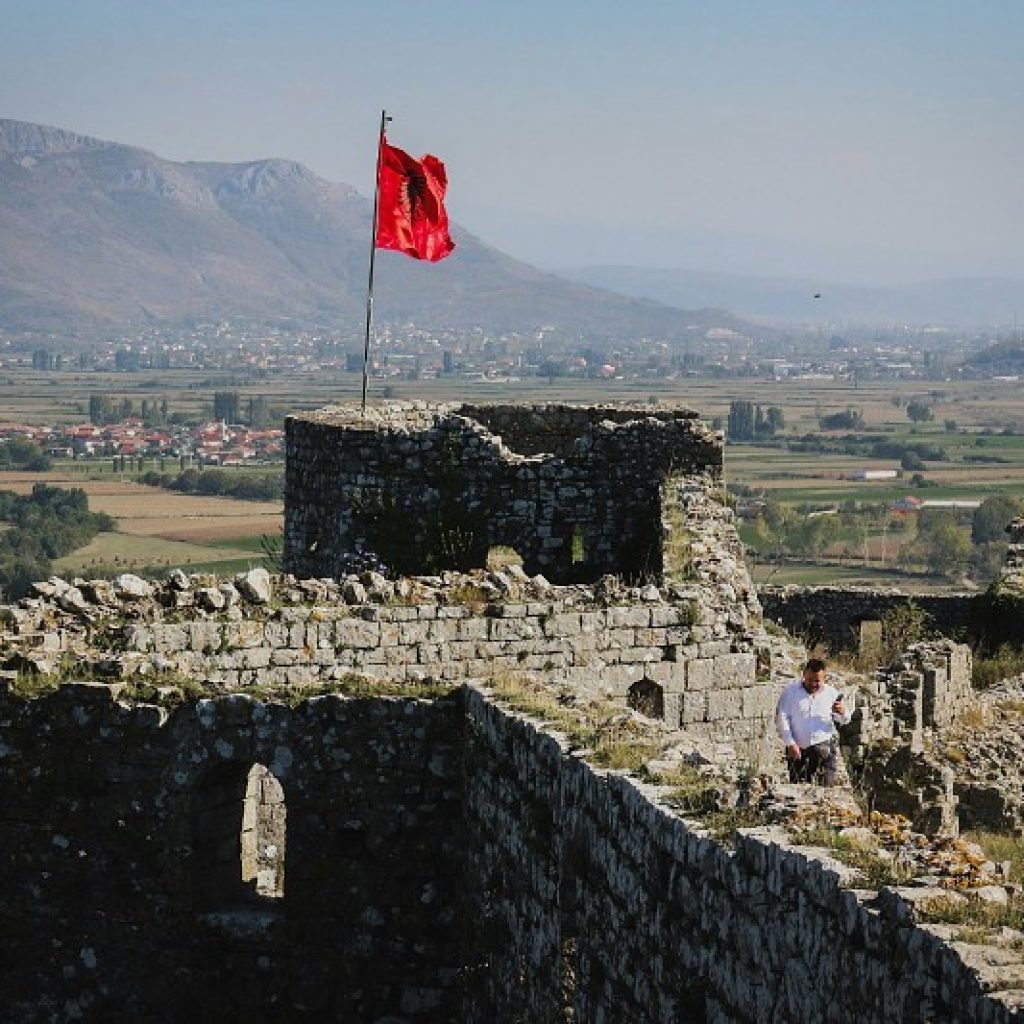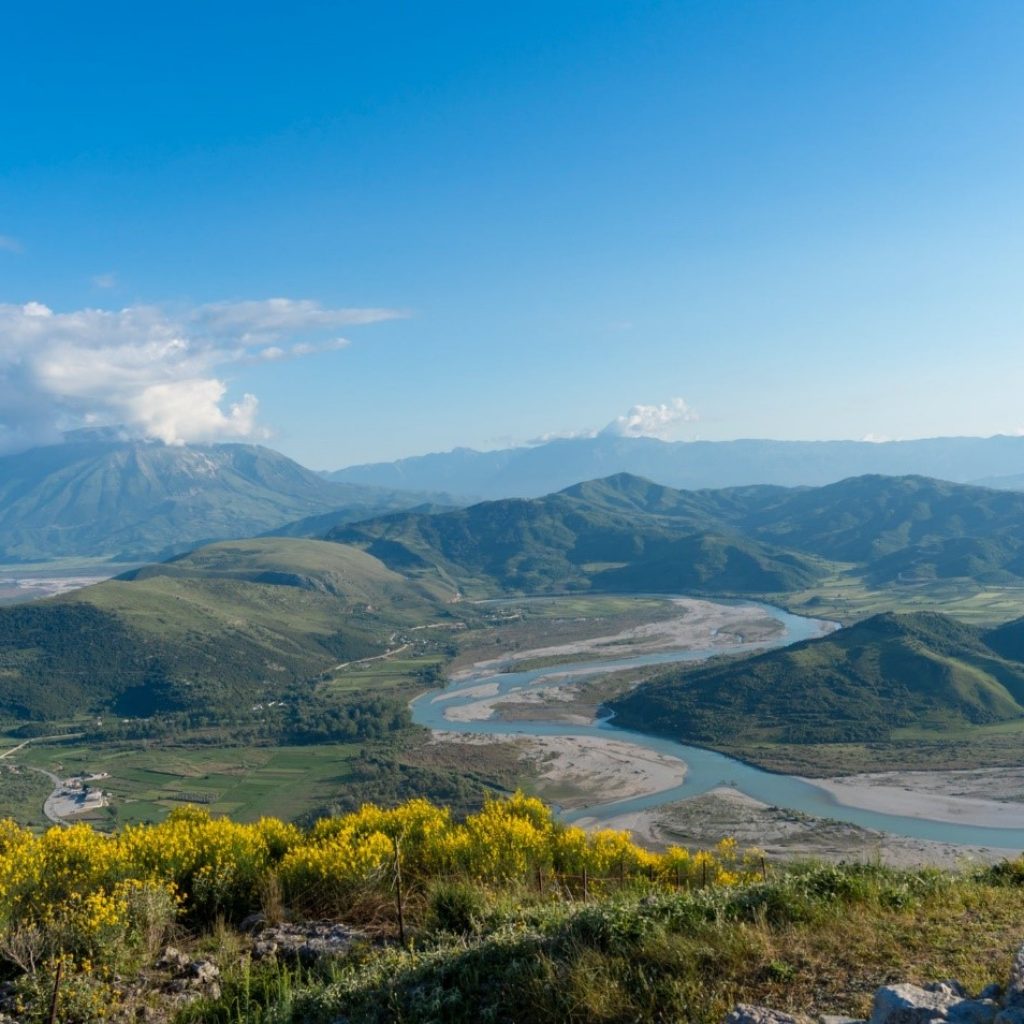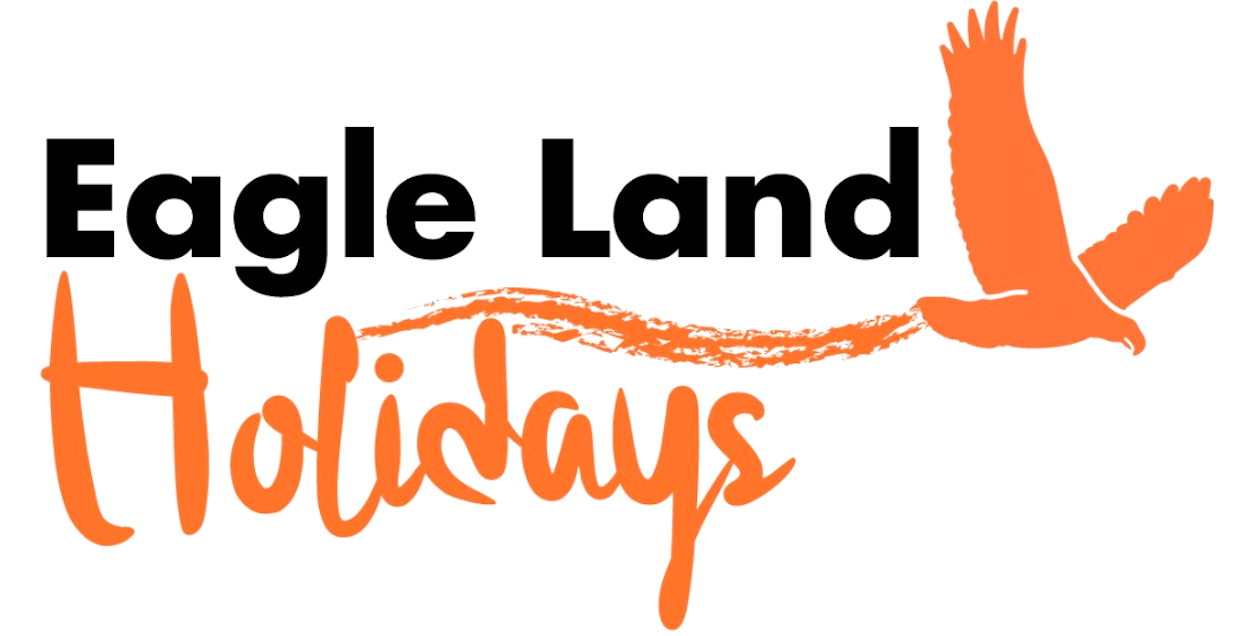A Albânia continua a ser um destino pouco turístico da Europa, mas motivos não faltam para explorar o país. A Mariana deixa alguns, acompanhados de dicas, a seguir.

Unsplash
A Albânia é um país barato, as pessoas são muito simpáticas, as paisagens vão desde as montanhas às praias de água cristalina, conta com uma história bem marcante e cidades que parecem saídas de um filme. Motivos para visitar o país não faltam. No entanto, há que relembrar que a Albânia somente é um país “livre” desde os anos 90 e que, por esse motivo, tem algumas características particulares que podem não coincidir com a típica imagem que temos dos países europeus.
1. Carro ou autocarro são as melhores formas de viajar pelo país
Dada a falta de uma boa rede de transportes públicos, o carro é, muitas das vezes, o meio de transporte mais prático e recomendado. Aliás, foi esta a opção que acabei por escolher devido à flexibilidade que me permitiu ter para visitar a Albânia. Mesmo assim, é também possível escolher viajar de transportes públicos. Estes resumem-se essencialmente aos autocarros e a pequenos furgões, já que a rede de comboios deixa (muito) a desejar.
2. É preciso ser um condutor experiente e adotar uma condução cuidadosa
Regra geral, as estradas na Albânia estão em boas condições. Na minha viagem, a única exceção que encontrei foi um troço da estrada que liga Shkodër a Komani. No entanto, os albaneses são conhecidos pela sua condução, digamos, meio frenética. Existe muita impaciência no trânsito, buzinadelas por tudo e por nada. Conduzir na Albânia é, portanto, uma verdadeira aventura!
Importa também referir que em alguns casos devemos conduzir de forma especialmente cuidadosa. Não são poucas as vezes em que encontramos peões em plena autoestrada ou via rápida, ou condutores de mota sem capacete na estrada. Deste modo, e para evitar acidentes graves, recomendo atenção redobrada nos momentos de condução.

Estrada na costa albanesa créditos: A Ticket to Take Off
3. O dinheiro (ainda) é rei
Quando planeava a minha viagem à Albânia, li em vários blogues que a maioria dos restaurantes (e muitas vezes até hotéis) não aceitam pagamentos com cartão. Apesar de isto ter-se revelado menos verdade do que estava à espera, são muitos os locais com um aviso à entrada de “cash only”. Deste modo, sugiro vivamente que andem sempre com algum dinheiro convosco, pois facilmente se encontrarão numa situação em que não podem usar cartão.
ADVERTISING
4. Euros são aceites, mas cuidado com a taxa de câmbio
Dada a proximidade da Albânia com países da Zona Euro, a moeda euro é amplamente aceite na Albânia. No entanto, nesses casos é habitual indicarem-vos a taxa de câmbio. E a verdade é que raramente compensa pagar em euros. Por isso, confirmem sempre qual a taxa de câmbio naquele momento para garantir que não saem a perder.
5. Os preços são baixos
Para um turista que venha de outros países europeus é fácil considerar a Albânia um país barato, especialmente no que diz respeito a alojamentos e refeições. Facilmente, uma refeição num restaurante médio custa 6€ por pessoa e uma noite num quarto com WC privativo cerca de 15€ por pessoa. Claro que existem valores mais altos (e também baixos), dependendo sempre da experiência que procuramos. No entanto, é inegável que a Albânia é um dos países mais baratos na Europa.
6. É um país seguro
Li em alguns sites que nem sempre era seguro viajar na Albânia. Contudo, a minha experiência foi bastante positiva. Nunca me senti insegura (nem à noite) e andei frequentemente com a máquina fotográfica e o telemóvel visíveis. No entanto, é de reforçar que tive, como em todas as viagens que faço, os cuidados habituais. De qualquer forma, há duas zonas que efetivamente recomendam não visitar na Albânia (zona junto à fronteira com o Kosovo e Lazarat). Todavia, não tenho qualquer experiência nestes dois locais, pelo que alerto meramente para algumas dicas que vi online.

Mesquita em Shkodër créditos: A Ticket to Take Off
7. A comunicação é fácil
A língua na Albânia é o albanês, uma língua que não se compara com mais nenhuma. Assim, para além das expressões básicas, não será fácil tentar falar albanês. Mas tal não é problema, pois a população expressa-se, regra geral, muito bem em inglês! E, em alguns casos até, conseguem encontrar albaneses que falam italiano, já que o país chegou a estar ocupado por Itália.
8. Escolham bem o aeroporto
O único aeroporto na Albânia com boas ligações internacionais está localizado em Tirana, a capital do país. Este é um excelente ponto de partida para quem pretende fazer uma road trip pelo país já que fica localizado relativamente a meio. No entanto, e se apenas pretendem visitar a zona das praias (o que não recomendo, pois o país é muito mais do que as suas praias) ou a zona sul, pode fazer sentido voar até Corfu, na Grécia, e daí apanhar um ferry até Sarandë.
9. Existem várias religiões no país
Ainda que a maioria dos habitantes na Albânia sejam muçulmanos, é habitual encontrarmos pessoas de várias religiões. Aliás, tal é visível na quantidade de igrejas ortodoxas e católicas que vamos encontrando, a par das mesquitas existentes nas cidades.

Bunker em Tirana créditos: A Ticket to Take Off
10. Preparem-se para as centenas de bunkers
O que não falta espalhado pela Albânia são bunkers. Sim, leram bem! A Albânia esteve sob um regime ditatorial em que o ditador Enver Hoxha vivia obcecado que iria ser vítima de um ataque nuclear. Desta forma, mandou construir mais de 100 mil bunkers por todo o país. A verdade é que o tão temido ataque nuclear nunca chegou a acontecer e, agora, os bunkers estão ao abandono. São exceções dois dos maiores bunkers do regime, construídos em Tirana, podendo-se visitar o museu que existe no seu interior.
I went to Europe’s last true wild frontier to find adventure and escape the crowds
It’s been touted as the next big beach holiday destination, but three-quarters of Albania is mountains, rivers and lakes – Laura Sanders adventures off the beaten track to and unearths unrivalled natural beauty in the Albanian Alps
Monday 26 August 2024 06:00 BST

View point: Looking down over the Vjosa river (Getty Images)
Even a week after I returned from Albania, in my mind I was still in the Accursed Mountains, a fitting name for the dramatic limestone karst and thick beech forests that stood before me.
With scenes resembling the Peruvian Andes, it was hard to believe it was just a three-hour flight away from home in the UK. These untamed landscapes have few signs of civilisation (not counting the increasing number of hikers on the Valbona Pass).
A detox to modern life, the valleys are sporadically dotted with kullas (north Albanian farmhouses), which are hundreds of years old, quite possibly the same ones Victorian travel writer Edith Durham passed by. In her 1909 travelogue, High Albania, she noted how “time stood still” in Theth and the surrounding villages.
One could argue it hasn’t moved on much since, with a few exceptions: you can take a Land Rover Defender taxi to your guest house rather than a mule; there are a handful of hotels after a post-millennium tourism boom, and, thankfully, the isolation tower is just a museum these days as blood feuds are a rarity. There is, of course, hot water and wifi now, too (unless a storm knocks it off), so you’re not totally off-grid.

The village church in Theth – where time seems to stand still (Getty Images)
The farms there have passed down through the generations and are tended in traditional ways; the family I stayed with still leads their cattle up to high summer pastures in Theth and back down to the foothills in Shkodër to escape the harsh winters. Many like them are now opening their ancestors’ homes to hikers, offering a priceless cultural exchange, farm-to-table home-cooked food, and all-consuming bucolic beauty.
But even in 2024, Theth and Valbona are relatively cut off from the outside world; they only recently had some of their roads tarmacked and it’s quicker to hike the pass between the two than drive.
The natural world remains even more unchanged. Large sections of the forests are so untouchable they’re considered primeval, particularly near the border with Kosovo, where there are trees thought to be more than 350 years old. As I clambered up to the saddle of the Valbona Pass (1,800m above sea level) to a chorus of cuckoos, I gazed down at the prismatic Valbona River. A mere thread vein through the floodplain in June, it’s one of Europe’s cleanest rivers.

The writer reaches the top of the Valbona Pass (Laura Sanders)
However, Albania’s ultimate claim to being Europe’s final wild frontier is the mighty Vjosa, the continent’s last completely untouched river outside of Russia. Though part of it crosses Greece, the majority slices through Albania, where it became the first river to be designated a national park in 2023 to protect it.
Seventy-five per cent of Albania is made up of these larger-than-life landscapes, and while can be touted as the affordable fly-and-flop destination, beach bums are missing out by making a beeline for the seaside.
Instead, touch down in Tirana and head north. Within minutes of leaving the airport, you’re driving through pastures synonymous with a Greek island: fruit orchards, shepherds herding their sheep, and hazy mountains along the skyline. Stop to admire the views with a spot of lunch at Mrizi i Zanave, an award-winning agritourism dining establishment that locals flock to at the weekends. Take a free tour of their wine and cheese stores and learn how they produce their food on site before tucking in. There’s no menu; you will be served whatever is in season.

Tuck in: Dining on authentic Albanian cuisine (Laura Sanders)
Continue for another two to three hours to Shkodër, the namesake of southern Europe’s largest lake, which teeters on the border with Montenegro. Known as Albania’s cycling city, Shkodër is a perfect base for exploring the lake and the Albanian Alps. It’s not far from there that on a 30C June afternoon, I drifted into a nature reserve surrounded by water lilies on a stand-up paddleboard and sank my feet into the putty-like lake floor during a swim. Here, the Dalmatian pelican squawked from behind the reeds as our guide Drini explained how conservation work has brought them back from the brink of extinction. The conversation changed pace when we tittered at the local name for carp fish (“krap”). He got us back with English words that translate to something rude in Albanian – I will leave you to discover those for yourself.
A little later, I continued bathing in the refreshing water at Lake Shkodra resort where, after a sunset dip spent staring across at Montenegro on the far side, I retreated to my bell tent and drifted off to the mating calls of Albanian water frogs and later into the night, golden jackals, which I mistook for children guffawing in the fields past their bedtime, stirred me.
The lake’s beauty has long attracted German tourists but much of western Europe is still unaware of North Albania’s hidden beauty. To wake up and gaze out at the Accursed Mountains on one side and the Montenegrin border on the other was magic. Slow travel is the best approach here. By hiking, biking and paddling through it, you get the full story. As tourism increases, I only hope Albania remains wild at heart.



0 Comment